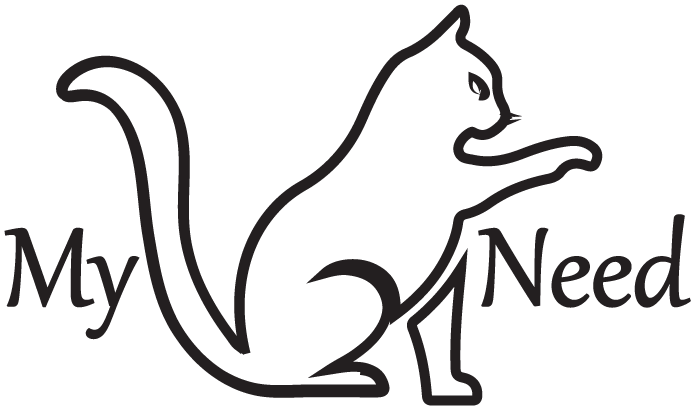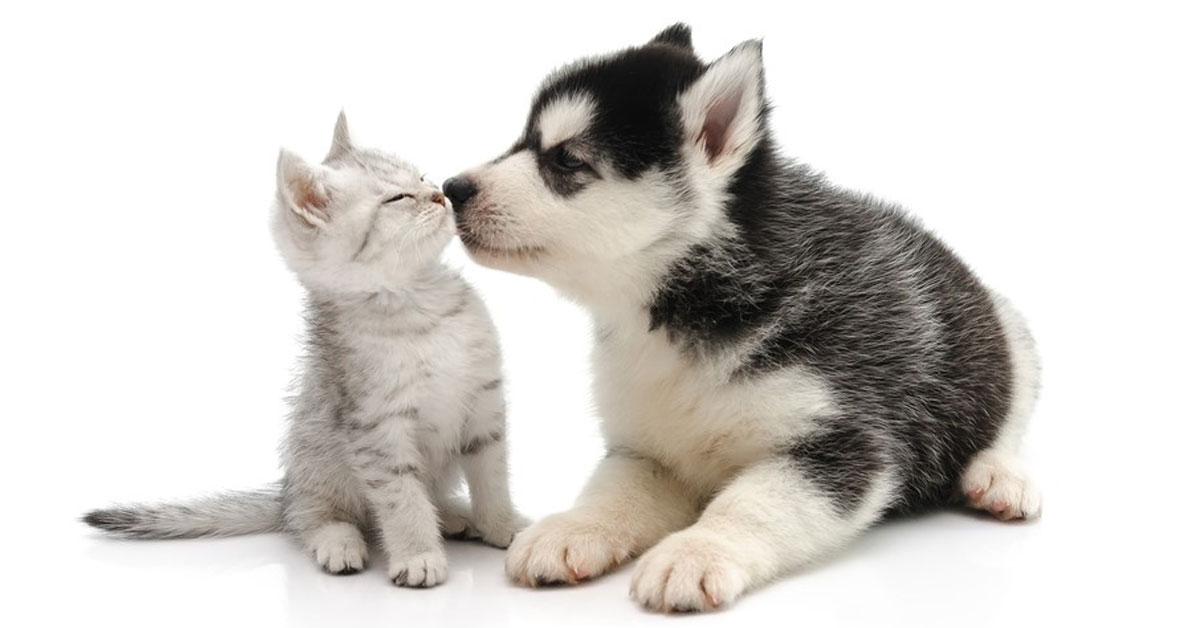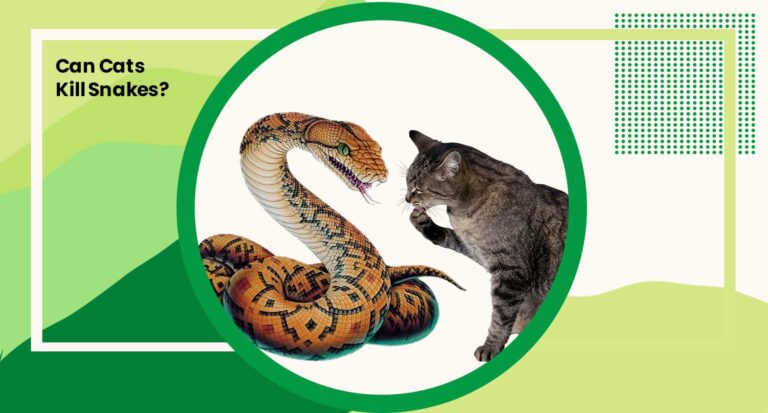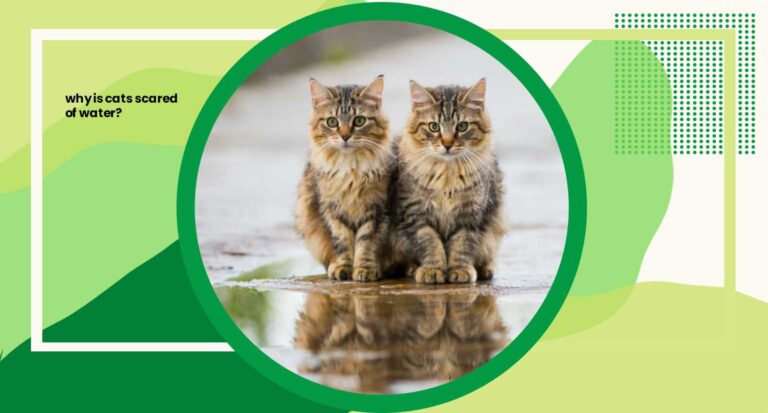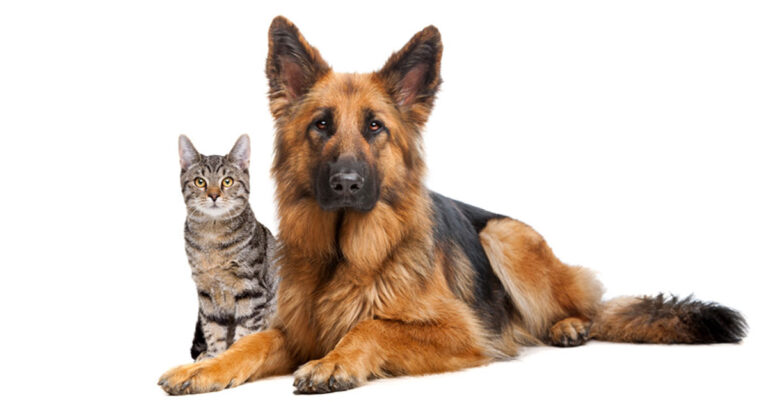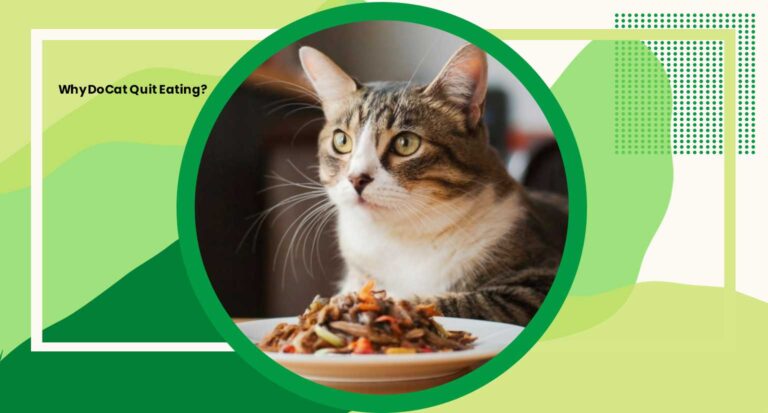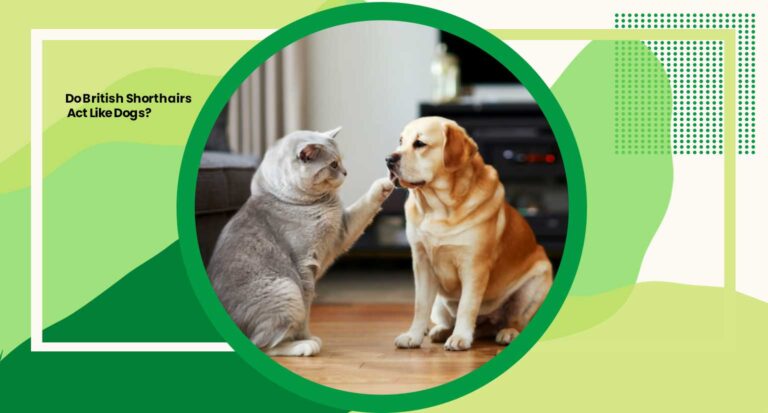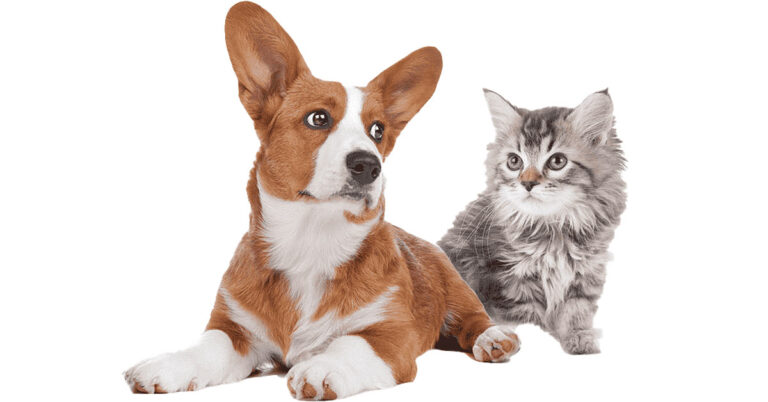Are Huskies Good With Cats?
Understanding the inherent characteristics of husky dogs can make it easier for potential husky owners or dog lovers in general to cultivate a good relationship with other pets in the house. Despite their strong prey drive, huskies are also known for their friendly and social nature, making them part of the family. With the right approach, a husky and a house cat can become the best of friends.
Siberian Huskies are known for their high energy levels and strong prey drive. This breed of dog, originating from the Chukchi tribe of Siberia, was bred to be sled dogs. Their primary role was pulling heavy loads on sleds for long distances in frigid temperatures. Their powerful build and heightened senses made them invaluable to the Chukchi people.
Part of the Huskies’ natural instincts comes from their history as working dogs. Their high prey drive is due to their need to hunt for food in harsh environments. This prey instinct is a core trait of their breed and is often directed towards smaller animals. While this may not spell good news for a cat owner, it does not necessarily mean that a Siberian Husky cannot live harmoniously with a feline friend. It all comes down to early socialization, proper training, and enough exercise to help manage their high energy levels.
High Prey Drive
Siberian Huskies have a high prey drive, a trait that was essential for their survival in the harsh conditions of Siberia. They are fast, agile, and have keen senses, particularly sight and smell, that make them effective hunters. This strong prey drive can sometimes be directed towards smaller animals such as guinea pigs, small dogs, and cats.
High prey drive doesn’t necessarily mean aggressive behavior. It is an instinctual behavior rooted in their past when they needed to hunt to survive. The husky’s chase instinct is strong and can be triggered by fast-moving smaller animals. Understanding this can help pet owners mitigate any potential issues that may arise in a multi-pet household. With proper training and enough mental stimulation, huskies can learn to live harmoniously with smaller pets.
One important thing to note is that every husky is an individual. While the breed as a whole has a high prey drive, not all huskies will show the same level of interest in smaller animals. Some might display strong signs of aggression, while others may simply ignore smaller pets. It is crucial for husky owners to understand their dog’s unique personality and traits to ensure a harmonious living environment for all pets.
Mental Stimulation
Siberian Huskies are intelligent, curious, and require a lot of mental stimulation. They thrive when they have tasks to complete and problems to solve. Mental stimulation is just as important as physical exercise in keeping a husky happy and well-adjusted.
Providing your husky with interactive toys, teaching them new tricks, or setting up a playdate with other dogs are excellent ways to keep their minds sharp. Huskies are quick learners and enjoy challenges, making obedience training not just a means of instilling good behavior, but a form of mental engagement as well.
Mental stimulation can also help mitigate a husky’s prey drive. Engaging your husky in mentally stimulating activities can provide a good outlet for their energy and curiosity, decreasing their likelihood of chasing smaller animals for fun. It’s not just about keeping your husky well-fed and physically tired; they also need enough mental challenges to keep them from getting bored and seeking their own fun – which might involve your pet cat.
Implementing mental stimulation as part of your husky’s routine is a great idea. By keeping their minds engaged, you’re not only improving their overall well-being but also fostering a more harmonious environment for all members of the household, including the family cat.
Early Socialization and Training
Early socialization and training play a significant role in how well a Siberian Husky can get along with cats and other small animals. When introduced at a young age, huskies are more likely to accept cats as part of the pack rather than seeing them as prey. Socialization helps huskies understand the difference between family pets and prey animals.
Proper introduction is crucial when bringing a new husky puppy or an adult husky into a home with a pet cat. Keeping them in separate rooms at first, allowing them to get accustomed to each other’s scent, and then introducing them under controlled conditions can help to ensure a positive first encounter. A baby gate can provide a safe boundary for first introductions.
During this phase, it’s also a good idea to ensure that the cat has an escape route or high places to retreat to if they feel threatened. Cat trees and other safe spaces are excellent investments for multi-pet households.
Training a Siberian Husky to coexist peacefully with a cat requires patience and positive reinforcement. Rewarding good behavior around the cat and redirecting attention when the husky becomes overly interested in the cat can reinforce the idea that the cat is a friend, not prey. Enlisting the help of a professional dog trainer can also be beneficial, especially for first-time husky owners.
Remember, each husky is unique, and what works for one might not work for another. It might take time for a husky and cat to become best friends, but with patience, positive reinforcement, and a lot of love, it is certainly possible.
Proper Introduction
When introducing a new husky to a home with a cat, or vice versa, it’s important to take a slow and measured approach. The first meeting can set the tone for their future relationship, so it’s crucial to ensure a calm and positive environment. Here’s the best way to introduce a husky and a cat to each other:
- Keep them in separate rooms initially. This allows them to become accustomed to each other’s scent without the stress of a face-to-face meeting. You can exchange bedding between the rooms to familiarize them with each other’s scent. This helps them recognize the other as part of the family, not a prey animal or a threat.
- Once they are comfortable with the presence of each other’s scent, you can introduce them visually using a baby gate or a crate. Make sure the cat has the freedom to leave if they want to, and the husky is restrained from chasing the cat.
- Always supervise their interactions until you’re confident they can get along. Watch for signs of aggression from either pet. If either of them shows aggression, calmly separate them and try again later. Never punish either pet for showing signs of fear or aggression as this could reinforce negative associations.
- Provide positive reinforcement when your husky behaves well around the cat. Praise, petting, and treats can help associate good behavior around the cat with positive experiences.
Remember, patience is key during these introductions. It might take some time for the husky and the cat to get comfortable around each other. In some cases, they might simply tolerate each other, while in others, they may become the best of friends. Both outcomes are a win for the multi-pet household.
Positive Reinforcement
Positive reinforcement is a powerful tool in shaping your husky’s behavior towards cats and other small animals. This method of training encourages good behavior by rewarding it, which strengthens the likelihood of the behavior being repeated in the future.
When your husky displays a calm and non-aggressive attitude towards the cat, praise them and provide a treat or their favorite toy. This not only makes them happy but also reinforces the idea that being calm and friendly towards the cat is a good thing. Over time, your husky will learn to associate their good behavior around the cat with rewards.
On the other hand, if the husky shows signs of aggression or excessive interest in the cat, it’s important to redirect their attention and energy towards something else. Never use physical punishment as it can lead to fear, anxiety, and even more aggressive behavior.
It’s also essential to maintain equal attention to both the husky and the cat to prevent jealousy or feelings of neglect. Both pets should feel loved and part of the family.
Remember, positive reinforcement is not an overnight solution. It requires a lot of patience and consistency. However, the results are definitely worth it, as you can create a harmonious living situation for your husky and cat, and possibly even a strong friendship between them.
Creating a Safe Environment for Both Pets
Creating a safe environment for both your Siberian Husky and cat is integral to fostering a peaceful coexistence. This includes providing separate spaces for each pet, ensuring the cat has places to escape if necessary, and maintaining a balance of attention and care between the two.
Despite their sociable nature, huskies, like all dogs, appreciate having a space of their own where they can retreat to. This could be a comfortable bed or a designated room. Similarly, cats need their own safe spaces, such as cat trees or high shelves, where they can escape to if they feel threatened or simply want some alone time.
Investing in a baby gate can be incredibly useful when introducing a new husky or cat into the household. It allows the pets to become familiar with each other’s presence without direct contact, reducing the likelihood of negative interactions.
Another important aspect of creating a safe environment is ensuring both pets are well-cared for. This includes regular feeding, exercise for the husky to expend energy, and providing enough mental stimulation for both pets. Regular health check-ups are also vital to prevent any health issues that could affect their behavior.
Finally, creating a safe environment extends to the emotional well-being of your pets. Both the husky and the cat should feel loved and valued. A pet that feels neglected may act out, leading to potential conflict. By giving equal attention and care to both pets, you reinforce their position as valued members of the family, promoting a peaceful coexistence.
Separate Rooms
Initially, keeping your husky and cat in separate rooms can be a great way to start their relationship on a positive note. This allows each pet to have their own territory and prevents any potential territorial aggression. It also lets them get accustomed to each other’s scent and presence in a non-threatening way.
Separate rooms mean more than just physical boundaries. It’s about providing a safe space where each animal can relax and feel secure. This could be a bedroom, a separate part of the living room, or any other area where each pet feels comfortable. Ensure these areas are equipped with their favorite toys, comfortable bedding, food and water dishes, and, for the cat, a litter box.
The separate rooms approach is also beneficial during feeding times. Cats and dogs have different dietary needs, and keeping them separate during meals can prevent any food aggression or the risk of them eating the other’s food.
Over time, as your husky and cat become more comfortable with each other’s presence, you can gradually allow them to spend more time together under your supervision. The key is to take this process slow and steady, always prioritizing the comfort and safety of both pets.
Escape Routes
Providing escape routes for your cat is crucial when living with a husky or any other large dog breed. Even if your pets get along well most of the time, there can be moments of high energy or play that may overwhelm or scare your cat. At such times, having an escape route can prevent unnecessary stress or potential conflict.
Cat trees, high shelves, or any high places can serve as excellent escape routes. Cats naturally seek high ground when they feel threatened, so providing vertical spaces allows your feline friend to navigate the environment comfortably and securely. Make sure these areas are easily accessible to the cat and out of reach for the husky.
Another option for an escape route is a baby gate. A baby gate allows the cat to pass through while keeping the husky confined. It can also serve as a boundary during the initial introduction phase, making it a useful tool for multi-pet households.
Keep in mind that these escape routes are not about encouraging avoidance. They are about creating a safe and comfortable environment for your cat, where they have the option to retreat if needed. This can go a long way in fostering a peaceful relationship between your husky and cat.
High Places and Safe Spaces
Creating high places and safe spaces for your cat is an essential step in creating a harmonious environment when there is a Siberian Husky in the home. Cats naturally love to climb and seek high ground, especially when they need a break or feel threatened. By providing vertical spaces, you give your cat the comfort of having a retreat that is all their own.
Cat trees are one of the best investments for a multi-pet household. They not only provide a high place for the cat to retreat to but also offer a scratching post, sleeping areas, and sometimes toys. This can also help keep the cat entertained and mentally stimulated.
Shelves installed at various heights can also serve as a great vertical space for your cat. Ensure they’re installed securely and provide a comfortable surface for the cat to rest on. They can be enriched with cat beds, blankets, or toys to make them more appealing.
It’s also a good idea to create safe spaces at ground level, such as a cat bed in a quiet corner or a box they can hide in. Cats like having options and can choose between high and low spots depending on their mood.
Remember, these safe spaces should be inaccessible to the husky to ensure the cat can relax without the risk of being disturbed. By creating these high places and safe spaces, you can foster a more peaceful coexistence between your husky and cat.
Behavior and Energy Management
Managing the behavior and energy levels of your Siberian Husky is crucial when living with a cat. Huskies are known for their high energy levels and strong prey drive, which can sometimes lead to chasing or play that is too rough for a cat. By implementing strategies to manage your husky’s behavior and energy, you can foster a more peaceful and harmonious relationship between your pets.
Regular exercise is key for a husky. This breed is highly active and requires plenty of physical activity to stay healthy and happy. Regular walks, games of fetch, and agility training are some of the ways to ensure your husky gets the exercise they need. By expending their energy in a controlled and constructive way, they are less likely to display problematic behaviors at home.
Similarly, mental stimulation is just as important. Training sessions, puzzle toys, and interactive games can keep your husky’s mind sharp and engaged. This not only contributes to their overall well-being but also prevents boredom, which can lead to destructive or aggressive behaviors.
Training your husky to respect the cat’s space is also a vital aspect of behavior management. This can be achieved through positive reinforcement techniques, promoting good behavior, and discouraging undesirable actions.
Keep in mind that every husky is unique and what works for one might not work for another. Always approach behavior and energy management in a way that suits your husky’s individual personality and needs. With time, patience, and consistency, it’s entirely possible for your husky and cat to live together peacefully.
Enough Exercise
One of the best ways to manage your Siberian Husky’s behavior around a cat is by ensuring they get enough exercise. Huskies are a high-energy breed, originally bred for labor-intensive work such as pulling sleds over long distances. Because of their history, they need a significant amount of exercise to maintain their physical health and mental well-being.
Without adequate exercise, huskies can become bored and restless, leading to increased energy levels and potentially problematic behaviors, including chasing smaller animals like cats. However, a well-exercised husky is usually a well-behaved husky. Regular physical activity helps to burn off excess energy, reducing their impulse to chase or play roughly with the family cat.
Walking your husky at least once a day is essential. Consider taking them for a brisk walk or run, playing a long game of fetch, or even enrolling them in agility or other dog sports. The important thing is to keep them moving and engaged. Not only does this provide the necessary exercise, but it also strengthens the bond between you and your husky, further promoting good behavior.
Remember, though, that exercise needs vary from dog to dog. The age, health status, and individual temperament of your husky can influence how much exercise they need. Always monitor your dog’s response to their exercise regimen and adjust as necessary.
Brisk Walks and Playtime
Brisk walks and playtime are essential components of your husky’s routine. These activities not only satisfy your husky’s physical needs but also their mental needs. They provide the opportunity for your husky to explore their environment, engage their mind, and establish a strong bond with you, their owner.
Brisk walks are particularly beneficial for huskies. A quick-paced walk can help burn off their high energy, keeping them calm and relaxed at home. It also provides mental stimulation as they navigate new paths, sniff out interesting scents, and encounter other animals and people.
Try to include at least one brisk walk in your husky’s daily routine. You might also consider jogging or cycling with your husky if their health permits and they are properly leash trained. Always make sure to provide water and take breaks when needed, especially in warmer weather.
Playtime, on the other hand, is a chance for your husky to engage in fun and interactive activities. This could be a game of fetch, tug-of-war, or hide and seek. You could also consider puzzle toys, which provide both physical engagement and mental stimulation. Remember, the goal is not just to tire them out physically, but also to keep their minds active and engaged.
By incorporating brisk walks and playtime into your husky’s routine, you not only keep them physically fit and mentally stimulated but also help manage their energy levels and behavior around your cat.
Compatibility Considerations
When it comes to pairing a Siberian Husky with a cat, it’s crucial to consider a few key compatibility factors. While every husky and cat are individuals with their unique personalities, understanding some general breed tendencies can help guide you in promoting a harmonious relationship between them.
Siberian Huskies, as mentioned earlier, have a strong prey drive. However, with early socialization and proper training, they can often learn to live peacefully with a feline friend. On the other hand, cats are naturally cautious and territorial creatures, but they can learn to coexist with a dog given enough time and space.
Consider the temperament of your individual pets. Some cats are more laid-back and tolerant, while others are more skittish and likely to run (which can trigger a husky’s chase instinct). Similarly, some huskies might be more relaxed and less likely to chase, while others have a stronger prey drive.
Age is another factor to consider. Introducing a kitten to a fully grown husky or a husky puppy to an adult cat can sometimes be easier than introducing two adults. Younger animals are often more adaptable and can grow up seeing the other as part of the family.
It’s also worth considering the history of your pets. For example, a cat with prior negative experiences with dogs may be more fearful of your new husky. Conversely, a husky that has never seen a cat before may be more inclined to view them as prey.
Always remember, every pet is an individual, and there’s no one-size-fits-all approach. What works best will depend on the specific personalities and experiences of your pets. It will take patience, time, and understanding, but with careful management, a peaceful coexistence between huskies and cats is possible.
Adult Cats and Baby Huskies
Introducing an adult cat to a baby husky or a husky puppy can often be a strategic approach to fostering a good relationship between the two. Puppies, like kittens, are more impressionable, adaptable, and less set in their ways than adult animals. They provide a sort of ‘clean slate’ and are usually more open to forming relationships with different types of animals, including cats.
When introducing an adult cat to a husky puppy, it’s essential to do so in a controlled and safe environment. Initial introductions should be short and positive, always ensuring that the cat has an escape route or safe space to retreat to if they feel threatened or scared.
Keep in mind that husky puppies, despite their smaller size, can still be quite energetic and boisterous. Supervision during their interactions is crucial to prevent the puppy from overwhelming the cat. You can gradually increase the time they spend together as they become more accustomed to each other.
Moreover, this stage of a husky’s life is a prime opportunity for training. Teach your husky puppy that chasing the cat or other small animals is not acceptable behavior. Positive reinforcement techniques, rewarding the puppy for calm and non-aggressive behavior around the cat, can be highly effective.
Remember, while this method can often be easier, it still requires patience and time. It’s important to let the relationship develop at a pace that both the cat and the husky puppy are comfortable with.
Breed of Cat and Its Temperament
The breed of your cat and its temperament can significantly impact how well it gets along with a Siberian Husky. Just like dogs, different cat breeds have unique traits and behaviors. Some cats are more playful and social, while others prefer to be solitary. Understanding your cat’s breed traits and individual temperament can help you manage their interaction with your husky.
For instance, breeds like the Maine Coon, Ragdoll, or Siamese are known to be more sociable and may adjust better to living with a dog. They may be more likely to engage in playful behavior with the husky, given proper introductions and conditions. On the other hand, breeds that are more independent or shy, like the Russian Blue or Persian, may require more time and careful management to comfortably share space with a husky.
However, it’s essential to remember that every cat is an individual, and their breed does not entirely dictate their behavior. Their personal experiences and upbringing also play a significant role in shaping their temperament. A cat that has had positive experiences with dogs in the past, regardless of their breed, may be more likely to accept a new dog into the home.
Lastly, remember to consider your cat’s personal comfort and stress levels during the introduction process. Always provide them with safe spaces, and let them approach the husky at their own pace. It’s crucial that they feel secure and confident in their home environment, which can significantly contribute to a positive relationship between your cat and the husky.
Adjustment and Monitoring
Even with the best preparation and planning, the process of integrating a Siberian Husky and a cat under one roof can require a lot of time and adjustment for both pets. Monitoring their interactions, especially during the early stages, is key to ensuring a successful transition.
Watch out for signs of aggression from both the cat and the husky. Growling, hissing, or swatting from the cat, or excessive chasing and nipping from the husky, can indicate stress or discomfort. If these signs persist, consider seeking advice from a professional dog trainer or behaviorist.
Adjustments to the environment may be needed as both pets settle in. This could include creating additional safe spaces for your cat or implementing more structured exercise routines for your husky. Remember, the goal is to create a peaceful and comfortable environment for both animals.
It’s also crucial to monitor the overall health and well-being of your pets during this transition. Changes in eating habits, litter box use, or general behavior can indicate stress or anxiety. If you notice any concerning changes, it may be a good idea to consult with your vet.
Keep in mind that patience is key during this process. It might take weeks or even months for a husky and a cat to become comfortable with each other. In some cases, they may merely learn to tolerate each other, and that’s okay. What’s important is that they can coexist without causing harm or stress to each other.
With time, patience, and careful management, many huskies and cats can form a peaceful and even loving relationship, becoming an integral part of the family unit.
Signs of Aggression
One of the most crucial aspects of monitoring the interaction between your Siberian Husky and cat is identifying and addressing signs of aggression early on. This can help prevent escalated conflicts and potential harm to either pet.
Huskies might display aggression through obvious signs like growling, baring their teeth, or aggressive body posture. Less obvious signs might include focused staring at the cat, excessive chasing, or cornering the cat without an apparent playful intention. Remember that a husky’s high prey drive might cause them to see the cat as a prey animal, especially if the cat runs or acts fearful.
Cats, on the other hand, might hiss, spit, growl, or swat at the husky. They may also arch their back and puff up their fur to appear larger and more intimidating. If your cat is hiding more than usual, refusing to eat, or avoiding the husky entirely, these could also be signs of stress or fear.
If you notice any of these signs, it’s important to intervene immediately. Separate the pets and give them some time to calm down. It might be beneficial to consult with a professional dog trainer or animal behaviorist, who can provide advice tailored to your specific situation. Remember, it’s always better to address these issues sooner rather than later to maintain a peaceful home environment and ensure the well-being of both your pets.
New Tricks and Continuous Training
Even after the initial introduction and adjustment phase, continuous training is crucial in maintaining a peaceful coexistence between your Siberian Husky and cat. Huskies are intelligent and capable of learning new tricks throughout their lives, making ongoing training a valuable tool in managing their behavior around cats.
Training can help keep your husky’s high energy levels and prey drive in check. For instance, teaching them commands such as “leave it” or “stay” can help control their impulse to chase after the cat. Reward-based training or positive reinforcement methods are highly effective in teaching these commands. Always reward your husky for displaying good behavior around the cat, such as staying calm or ignoring the cat when it runs.
Training can also involve activities that provide mental stimulation for your husky. Interactive toys, puzzle feeders, or obedience training sessions can keep their mind busy and reduce their focus on the cat. This can be especially helpful in homes where the husky spends a lot of time indoors with the cat.
Keep in mind that successful training requires consistency and patience. While it may take time to see results, it’s well worth the effort in the long run. Remember, a well-trained husky is not only a joy to live with but also a safer companion for your cat.
And remember, no matter the age of your dog, the old saying “you can’t teach an old dog new tricks” isn’t true. Whether you’re training a young husky puppy or an adult husky, with consistency and patience, you can help guide their behavior around your cat.
Conclusion
Bringing a Siberian Husky into a home with a cat can certainly present some challenges. With the husky’s high prey drive and energy levels, it’s understandable that cat owners may have concerns. However, with the right approach, it is possible for a husky and a cat to live together harmoniously.
Early socialization, proper introduction, continuous training, and creating a safe environment are all integral parts of managing the coexistence of these two distinct pets. It’s important to keep in mind that every animal is an individual, and their success living together will largely depend on their individual temperaments, experiences, and the amount of time and effort you, as the pet owner, are willing to invest.
Remember, patience and consistency are key. It might take a considerable amount of time for a husky and a cat to adjust to each other’s presence. In some cases, they may simply learn to tolerate each other, while in other scenarios, they might become the best of friends. As long as they can coexist peacefully and without stress, you can consider it a success.
Ultimately, a harmonious multi-pet household is entirely possible with a Siberian Husky and a cat. So, if you’re a dog lover at heart but also a devoted cat owner, rest assured that with the right approach, you can enjoy the best of both worlds.
Related Articles:
